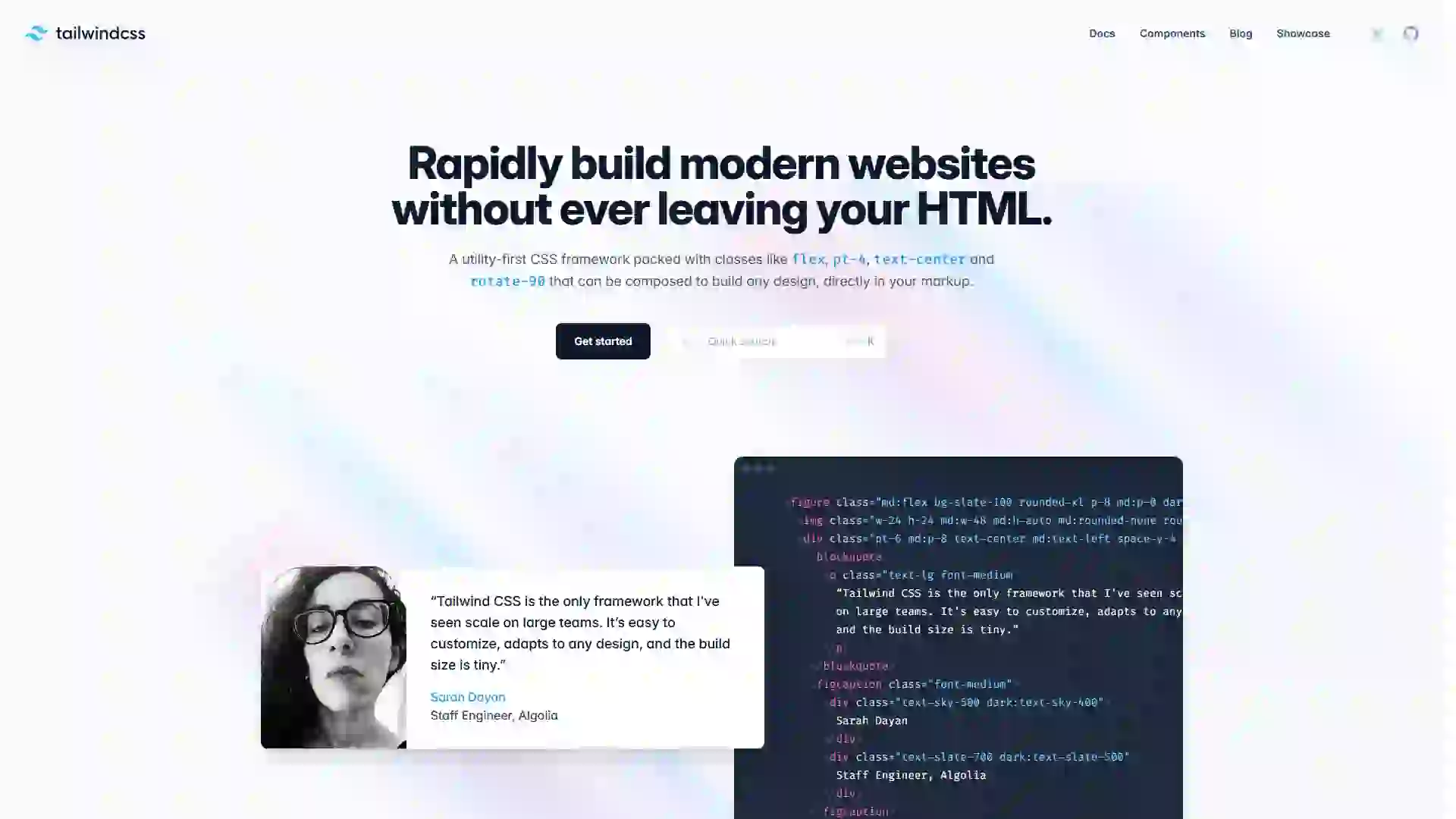- Home
- Development
- Tailwind CSS
Tailwind CSS
📝 Summary
Tailwind CSS is a cutting-edge CSS framework designed to revolutionize web development by prioritizing utility and efficiency. It empowers developers to seamlessly integrate styles directly into HTML, enabling the rapid creation of modern, responsive websites without sacrificing design flexibility.
✨ Features
-
Utility-First Approach
Tailwind CSS offers an extensive library of utility classes that can be directly applied in HTML to define styles. This eliminates the need for writing custom CSS, streamlining the development process and accelerating project timelines. -
Highly Customizable
Through its robust configuration files, developers can tailor design systems to match their project requirements. Easily modify colors, spacing, fonts, and other design elements to create a unique and cohesive visual identity. -
Responsive Design Made Easy
Tailwind CSS includes built-in responsive utility classes that simplify the adaptation of styles across various screen sizes. This ensures a consistent user experience on desktops, tablets, and mobile devices without additional effort. -
Performance Optimization
With PurgeCSS integration, Tailwind CSS automatically removes unused CSS from your project. This reduces file size, enhances loading speed, and optimizes overall performance—essential for delivering a seamless user experience.
🎯 Use Cases
-
Rapid Prototyping
Tailwind CSS is ideal for projects that demand quick construction and iterative design. By focusing on functionality and minimizing time spent on styling, developers can accelerate the development cycle and bring ideas to life faster. -
Enhanced Team Collaboration
The framework's unified utility class naming conventions reduce style conflicts among team members. This consistency enhances collaboration efficiency and ensures a cohesive design vision throughout the project lifecycle. -
Custom Design Systems
Tailwind CSS is perfectly suited for projects that require highly customized design systems. Its flexible configuration files allow developers to fine-tune design parameters, making it an excellent choice for both small-scale projects and large-scale enterprise solutions.
⚙️ Drawbacks
-
Learning Curve
Developers accustomed to traditional CSS may initially find the utility-first approach challenging. However, with practice and familiarity, Tailwind CSS offers significant long-term benefits. -
HTML Bloat
The extensive use of utility classes directly in HTML can sometimes reduce code readability, particularly in complex projects. However, this trade-off is often outweighed by the framework's efficiency and flexibility.
❓ FAQ
Q1: What are the main benefits of using Tailwind CSS?
A1: Tailwind CSS offers several key benefits, including accelerated development through utility-first classes, unparalleled customization options, simplified responsive design, and performance optimization. These features collectively enhance productivity and deliver high-quality web experiences.
Q2: How does Tailwind CSS compare to other CSS frameworks like Bootstrap?
A2: While Bootstrap provides pre-built components, Tailwind CSS focuses on utility classes, giving developers greater control over design and customization. Tailwind is ideal for those who prefer a more flexible and efficient approach, while Bootstrap may be better suited for projects requiring ready-made UI components.
Q3: Is Tailwind CSS suitable for beginners or professionals?
A3: Tailwind CSS is suitable for both beginners and professionals. Beginners can leverage its utility classes to quickly build projects, while experienced developers can harness its customization capabilities to create sophisticated, tailored solutions.

Tailwind CSS
Utility-first CSS framework for rapid styling | Customizable, responsive, optimized